Practice Free 300-410 Exam Online Questions
Refer to the exhibit.
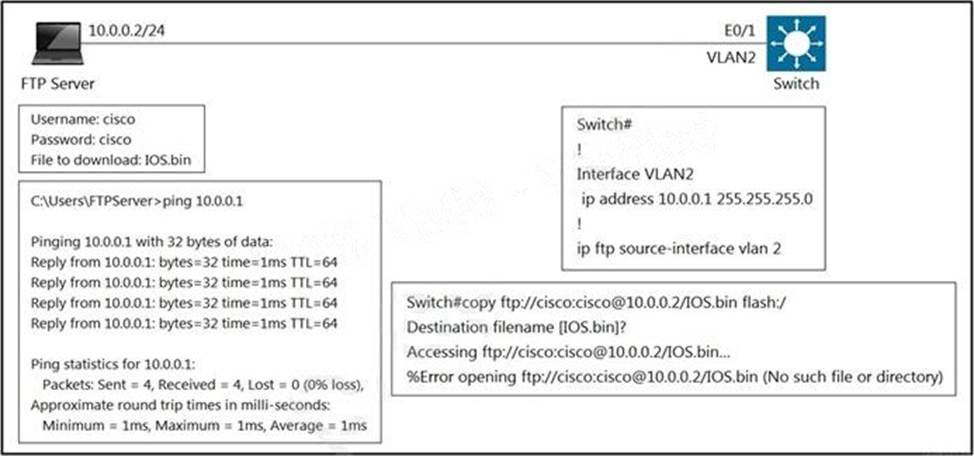
An engineer cannot copy the IOS.bin file from the FTP server to the switch.
Which action resolves the issue?
- A . Allow file permissions to download the file from the FTP server.
- B . Add the IOS.bin file, which does not exist on FTP server.
- C . Make memory space on the switch flash or USB drive to download the file.
- D . Use the copy flash:/ftp://[email protected]/IOS.bin command.
An engineer configured policy-based routing for a destination IP address that does not exist in the routing table.
How is the packet treated through the policy for configuring the set ip default next-hop command?
- A . Packets are not forwarded to the specific next hop.
- B . Packets are forwarded based on the routing table.
- C . Packets are forwarded based on a static route.
- D . Packets are forwarded to the specific next hop.
D
Explanation:
The set ip default next-hop command verifies the existence of the destination IP address in the routing table, and…
+ if the destination IP address exists, the command does not policy route the packet, but forwards the packet based on the routing table.
+ if the destination IP address does not exist, the command policy routes the packet by sending it to the specified next hop.
Reference: https://www.cisco.com/c/en/us/support/docs/ip/ip-routed-protocols/47121-pbr-cmds-ce.html
An engineer is creating a policy that overrides normal routing behavior. If the route to a destination of 10.100.100.0/24 is withdrawn from the routing Table, the policy must direct traffic to a next hop of 10.1 1.1. if the route is present in the routing table, then normal forwarding must occur.
Which configuration meets the requirements?
- A . access-list 100 permit ip any any
!
route-map POLICY permit 10
match ip address 100
set ip next-hop recursive 10.1.1.1 - B . access-list 100 permit ip any 10.100.100.0 0.0.0.255
!
Route-map POLICY permit 10
match ip address 100
set ip default next-hop 10.1.1.1 - C . access-list 100 permit ip any 10.100.100.0 0.0.0.255
!
route-map POLICY permit 10
match ip address 100
set ip next-hop 10.1.1.1
!
route map POLICY permit 20 - D . access-list 100 permit ip any 10.100.100.0 0.0.0.255
!
route map POLICY permit 10
match ip address 100
Set ip next-hop recursive 10.1.1.1
!
route-map POLICY permit 20
An engineer is creating a policy that overrides normal routing behavior. If the route to a destination of 10.100.100.0/24 is withdrawn from the routing Table, the policy must direct traffic to a next hop of 10.1 1.1. if the route is present in the routing table, then normal forwarding must occur.
Which configuration meets the requirements?
- A . access-list 100 permit ip any any
!
route-map POLICY permit 10
match ip address 100
set ip next-hop recursive 10.1.1.1 - B . access-list 100 permit ip any 10.100.100.0 0.0.0.255
!
Route-map POLICY permit 10
match ip address 100
set ip default next-hop 10.1.1.1 - C . access-list 100 permit ip any 10.100.100.0 0.0.0.255
!
route-map POLICY permit 10
match ip address 100
set ip next-hop 10.1.1.1
!
route map POLICY permit 20 - D . access-list 100 permit ip any 10.100.100.0 0.0.0.255
!
route map POLICY permit 10
match ip address 100
Set ip next-hop recursive 10.1.1.1
!
route-map POLICY permit 20
What is the role of a route distinguisher via a VRF-Lite setup implementation?
- A . It extends the IP address to identify which VFP instance it belongs to.
- B . It manages the import and export of routes between two or more VRF instances
- C . It enables multicast distribution for VRF-Lite setups to enhance EGP routing protocol capabilities
- D . It enables multicast distribution for VRF-Lite setups to enhance IGP routing protocol capabilities
Refer to the exhibit.
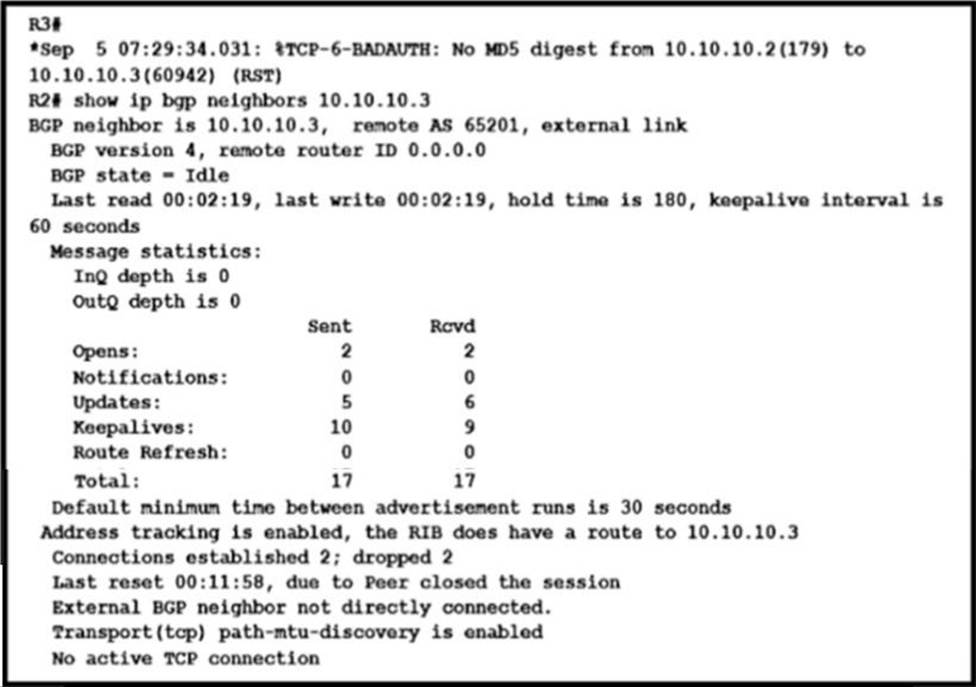
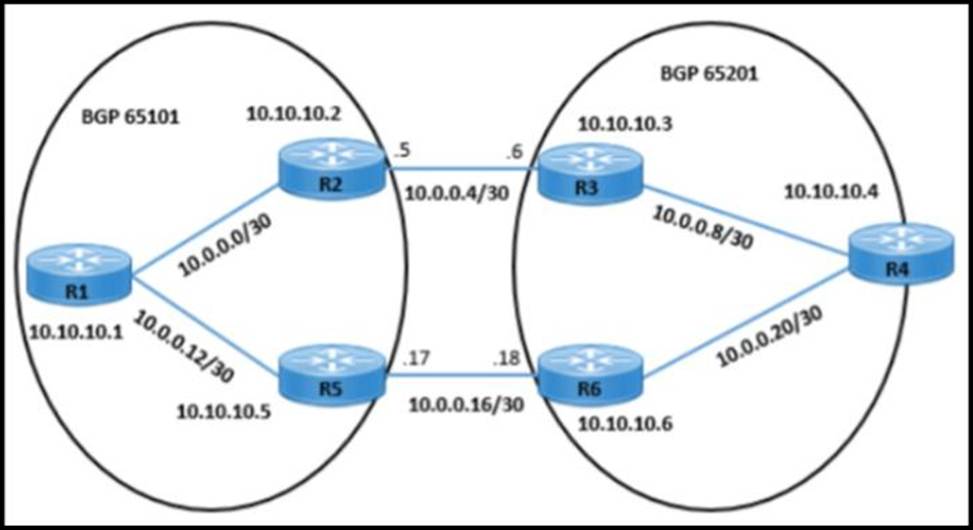
The network operation team observes a traffic forwarding issue between R2 and R3:
✑ Ping and traceroute of loopback IP address from R2 to R3 is successful.
✑ iBGP peering in AS 65101 and AS 65201 is up.
Which configuration resolves the issue?
- A . Configure MD5 password authentication on R2.
- B . Advertise R2 and R3 loopback IPs in AS 65101 and AS 65201.
- C . Remove MD5 password authentication on R3.
- D . Set up eBGP multihop on R2 and R3 routers.
Refer to the exhibit.
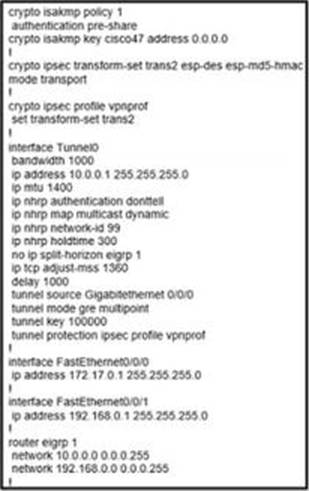
A network administrator must configure DMVPN tunnels between the hub and spoke with dynamic spoke-to-spoke tunnel capabilities using EIGRP.
Which tunnel interface command must the network administrator configure to establish an EIGRP peer?
- A . no ip next-hop-self eigrp 1
- B . ip next-hop-self eigrp 1
- C . no Ip nhrp ntxt-hop-self
- D . ip nhrp next-hop-self
Which MPLS value is combined with the IP prefix to convert to a VPNv4 prefix?
- A . 16-byte Route Distinguisher
- B . 8-byte Route Target
- C . 16-byte Route Target
- D . 8-byte Route Distinguisher
Refer to the exhibit.

A network administrator is using the DNA Assurance Dashboard panel to troubleshoot an OSPF adjacency that failed between Edge_NYC interface GigabitEthernet1/3 with Neighbor Edge_SNJ. The administrator observes that the neighborship is stuck in exstart state.
How does the administrator fix this issue?
- A . Configure to match the OSPF interface speed and duplex settings on both routers.
- B . Configure to match the OSPF interface MTU settings on both routers.
- C . Configure to match the OSPF interface unique IP address and subnet mask on both routers.
- D . Configure to match the OSPF interface network types on both routers.
B
Explanation:
https://www.cisco.com/c/en/us/support/docs/ip/open-shortest-path-first-ospf/13684-12.html
Refer to the exhibit.
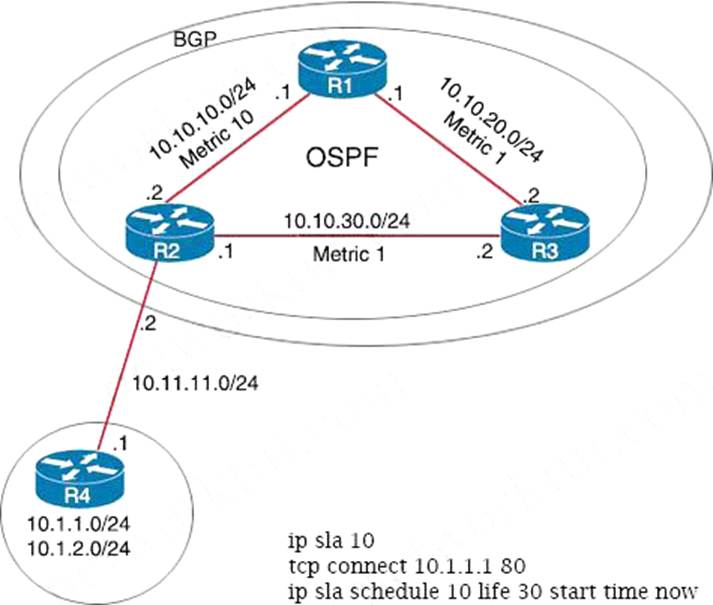
A user has set up an IP SLA probe to test if a non-SLA host web server on IP address 10.1.1.1 accepts HTTP sessions prior to deployment. The probe is failing.
Which action should the network administrator recommend for the probe to succeed?
- A . Re-issue the ip sla schedule command.
- B . Add icmp-echo command for the host.
- C . Add the control disable option to the tcp connect.
- D . Modify the ip sla schedule frequency to forever.
